
Luca Giordano was an Italian late-Baroque painter and printmaker in etching. Fluent and decorative, he worked successfully in Naples, Rome, Florence, and Venice, before spending a decade in Spain.

Giuliano da Sangallo was an Italian sculptor, architect and military engineer active during the Italian Renaissance. He is known primarily for being the favored architect of Lorenzo de' Medici, his patron. In this role, Giuliano designed a villa for Lorenzo as well as a monastery for Augustinians and a church where a miracle was said to have taken place. Additionally, Giuliano was commissioned to build multiple structures for Pope Julius II and Pope Leo X. Leon Battista Alberti and Filippo Brunelleschi heavily influenced Sangallo and in turn, he influenced other important Renaissance figures such as Raphael, Leonardo da Vinci, his brother Antonio da Sangallo the Elder, and his sons, Antonio da Sangallo the Younger and Francesco da Sangallo.

Domenico Fontana was an Italian architect of the late Renaissance, born in today's Ticino. He worked primarily in Italy, at Rome and Naples.

Museo di Capodimonte is an art museum located in the Palace of Capodimonte, a grand Bourbon palazzo in Naples, Italy designed by Giovanni Antonio Medrano. The museum is the prime repository of Neapolitan painting and decorative art, with several important works from other Italian schools of painting, and some important ancient Roman sculptures. It is one of the largest museums in Italy. The museum was inaugurated in 1957.
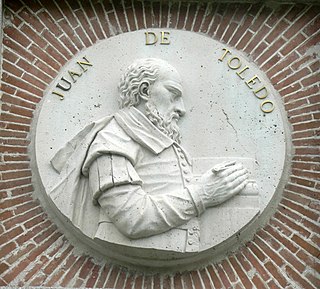
Juan Bautista de Toledo was a Spanish architect. He was educated in Italy, in the Italian High Renaissance. As many Italian renaissance architects, he had experience in both architecture and military and civil public works. Born, either in Toledo or in Madrid around 1515. He died on 19 May 1567 in Madrid, and was buried in Madrid in the choir of the primitive “Convento de Santo Tomás, Iglesia de la Santa Cruz”.

Gesù Nuovo is the name of a church and a square in Naples, Italy. It is located just outside the western boundary of the historic center of the city. To the southeast of the spire, one can see a block away the Fountain of Monteoliveto and the piazza of the church of Sant'Anna dei Lombardi. The square is a result of the expansion of the city to the west beginning in the early 16th century under the rule of Spanish viceroy Pedro Alvarez de Toledo. The square of Gesù Nuovo contains three prominent landmarks:
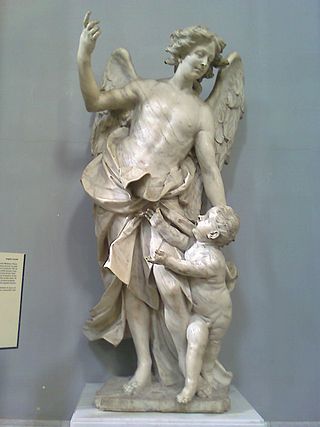
Domenico Antonio Vaccaro was an Italian painter, sculptor and architect. He created many important sculptural and architectural projects in Naples. His later works are executed in an individualistic Rococo style.

The Palazzo Doria d’Angri is an historic building and monument in Naples in southern Italy located in Piazza 7 Settembre in the corner with the busy Via Toledo and Via Monteoliveto.

Montecalvario is a neighbourhood (quartiere) of Naples, southern Italy. The area centers roughly on the square called Piazza Carità and the metal monument to Salvo D'Acquisto at the northern end of the Quartieri Spagnoli of the city; the area stretches along the main downtown street, via Toledo, to include a number of historic buildings built under the Spanish Viceregal in the 16th century, including the building that housed the "Nunzio apostolico", the ambassador of the Holy See to Naples, and the home of Giambattista della Porta. The area is part of the Historic Centre of Naples, a UNESCO World Heritage Site.

Giacinto Brandi was an Italian painter from the Baroque era, active mainly in Rome and Naples.
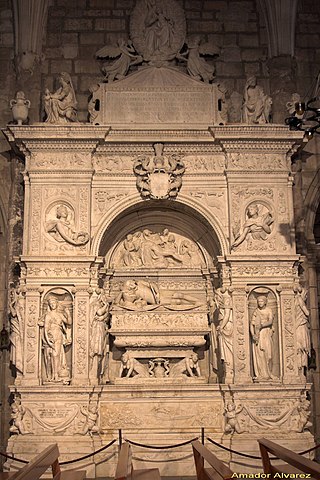
Giovanni da Nola (1478–1559), also known as Giovanni Merliano, was an Italian sculptor and architect of the Renaissance, active in Naples.

Giovanni Battista Amendola (1848–1887) was an Italian sculptor from Sarno, Italy.
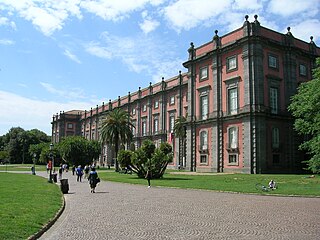
The Royal Palace of Capodimonte is a large palazzo in Naples, Italy. It was formerly the summer residence and hunting lodge of the Bourbon kings of the Two Sicilies, one of the two royal palaces in Naples. Today, the main building holds the main Neapolitan museum for paintings, and much other post-ancient art, in the National Museum of Capodimonte. This has the best collection of paintings from the distinct tradition of Neapolitan art, and also many works from the Farnese Collection.
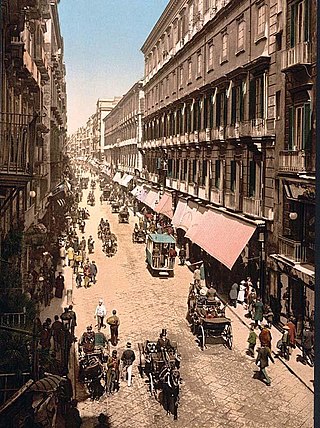
Via Toledo is an ancient street and one of the most important shopping thoroughfares in the city of Naples, Italy. The street is almost 1.2 kilometres (0.75 mi) long and starts at Piazza Dante and ends in Piazza Trieste e Trento, near Piazza del Plebiscito.

Montisi is an Italian village in the municipality of Montalcino, Province of Siena, Tuscany. It sits on a hill on the boundary between the Val d'Orcia and the Crete Senesi.

Santi Buglioni, by the name of Santi di Michele was an important Renaissance Italian sculptor, the nephew and collaborator of Benedetto Buglioni.
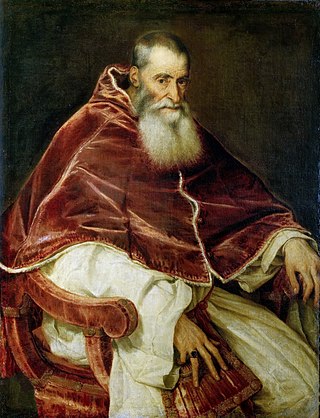
Portrait of Pope Paul III is a 1543 oil on canvas portrait by Titian of Pope Paul III, produced during the pope's visit to Northern Italy. It is in the collection of the Capodimonte Museum, Naples, southern Italy.
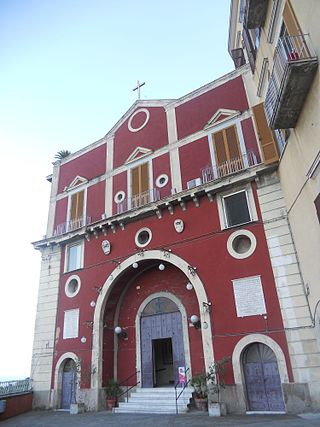
Santa Maria del Parto a Mergellina is a church located in the quartiere of Chiaia in Naples, Italy. The church is peculiarly perched on top of a private building and accessed by a stairway, placed behind a restaurant located in piazza Mergellina.

The Palazzo Cellamare or Cellammare is a monumental palace located in via Chiaia 139 in the Quartiere San Ferdinando of Naples, Italy. The entrance is near the church of Santa Caterina a Chiaia.

San Giacomo degli Spagnoli is a basilica church in Piazza Municipio in central Naples, Italy. The Renaissance church was enveloped in 1812 by the Palazzo San Giacomo built by King Ferdinand I of Bourbon when he built a central block of offices for the ministries of his government adjacent to the fortress of the Castel Nuovo. The Palazzo San Giacomo is now the municipio or city hall of Naples. Another church of San Giacomo degli Spagnoli is found in Rome.




















